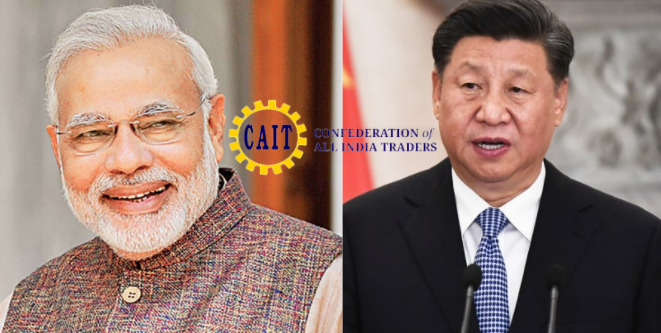In June, when the India-China border clash heightened due to continued Chinese aggression, Confederation of All India Traders (CAIT), the apex body of the traders’ union which represents 4,000 traders’ bodies and more than 7 crore traders across the country, has decided to boycott Chinese goods worth more than 1 lakh crore rupees– 13 billion dollars approximately– by December 2021. CAIT has already prepared a list of 3,000 items which includes toys, gifts, FMCG products, confectionery products, clothes and watches, as superior indigenously manufactured alternatives of these items are available.
In the last three months, CAIT has become the leader of the boycott China movement by ensuring that not a single Chinese product is imported during festivals. Two big festivals- Raksha Bandhan and Ganesh Chaturthi passed since June and neither Chinese Rakhis nor Ganesh idols imported from China saw the light of the day in India.
“The whole country understands the importance of hurting China economically and therefore we wholeheartedly welcome this great initiative and will stand shoulder to shoulder with Sonam Wangchuk,” said CAIT general secretary Praveen Khandelwal at the boycott by the trader’s body was announced. And so far, under his leadership, CAIT has successfully implemented the boycott with very good efficiency.
Highlighting the role of the manufacturers, Khandelwal said, “The role of Indian manufacturers is very significant to successfully run this campaign because at no point of time should there be any shortage of products in the market and the consumers of India should not suffer due to such scarcity.”
In the last few months, Indian manufacturers have successfully replaced Chinese products without many glitches in the market, while the Modi government has actively supported them. In the latest move to throw China out of Indian toys market, the Modi government has decided to discuss domestic plastic manufacturing with the industry leaders. The government might incentivise the Indian plastic manufacturers under the Atma Nirbhar Bharat project to throw Chinese players out of the Indian market.
India imported goods and services worth 65.26 billion dollars from China in FY 20 while the total trade volume stood at 81.6 billion dollars, registering a trade deficit of 48.66 billion dollars. This was even though the Modi government increased custom on many Chinese goods like steel, toys, scooters, and tricycles.
The country has seen repeated calls for the boycott of Chinese goods whenever there are border skirmishes, and in the festive seasons like Diwali. But once things are back to normal, it is business as usual and people are again dependent on Chinese goods.
However, this time, due to the active leadership of CAIT and supportive policies from the Modi government, the boycott has been very successful in the last few months.
“In the year 2001, the import of Chinese goods into India was only $2 billion, which has now increased to $70 billion, meaning that imports from China increased by 3500 per cent in only 20 years. This clearly shows that under a well thought out strategy, China is trying to gain control over India’s retail market, which Indian businessmen and citizens will not allow succeeding in any case,” said Khandelwal when CAIT first announced the boycott of 3,000 Chinese goods.
“I must admit it was an error on the part of the business community, traders as also the government that we did not look at alternatives earlier which allowed China to become this big. It is high time now and corrective measures are needed,” he added.
However, this time India is succeeding in throwing Chinese companies out of the Indian market. The boycott of Chinese goods worth 13 billion dollars by December 2020, if successful, would bring down the trade deficit of 48 billion dollars significantly. The synchronized effort of the Indian government and traders would benefit the Indian manufacturers and harm the Chinese economy, which is dependent on exports.
